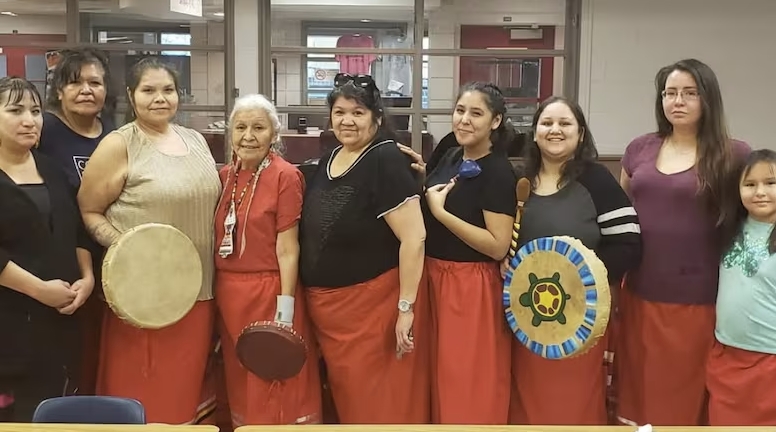Red Ribbon Skirts Honor Missing and Murdered Indigenous Women at Vancouver Memorial March
Shraddha Tripathy
2/14/20252 min read


The sound of drumming at a Women's Memorial March in Vancouver years ago became a life-changing moment for Jamie Smallboy.
At the time, Smallboy was homeless, struggling to reconnect with her Indigenous roots. As she turned onto East Hastings Street, she saw thousands of people marching. When she learned they were honoring missing and murdered Indigenous women and girls (MMIWG), she broke down in tears.
“I knew women who taught me how to survive,” Smallboy recalls. “Some of them disappeared without a trace, and no one ever knew what happened to them.”
That moment set Smallboy on a path to reconnect with her culture—a journey that eventually led to the creation of 100 red ribbon skirts every year, gifted to families attending the annual march on Feb. 14.
The Meaning of Ribbon Skirts
Ribbon skirts have deep cultural significance in many Indigenous communities. Traditionally worn to ceremonies, the skirts symbolize identity, protection, and connection to heritage.
For Smallboy, a Cree woman from Maskwacis, her first memory of wearing a ribbon skirt was at a ceremony with her mother and aunties.
“I remember feeling sacred,” she says. “That was the most genuine I have ever felt about who I am.”
Wanting to share that feeling with others, she launched a project to create red ribbon skirts for those affected by the MMIWG crisis.
The project has now grown into a community-led initiative, with volunteers gathering on weekends before the march to sew the skirts by hand. The funding for materials comes from the Women's Memorial March committee.
Why Red?
According to Indigenous beliefs, red is the color that spirits can see, making it a powerful way to honor lost loved ones.
This year, Billie Sinclair, a longtime MMIWG advocate, has taken over the project from Smallboy.
For Sinclair, the cause is deeply personal—her aunt, Georgina Papin, was one of the women whose remains were found on Robert Pickton’s farm in 2002.
Sinclair admits she was initially hesitant about taking on the responsibility but found the experience energizing.
"I was worried about taking on too much," she says. "But when I come each week, I don’t feel depleted—it’s filling my cup."
A Growing Movement Across Canada
The Red Ribbon Skirt Project is now inspiring communities beyond Vancouver.
Women from Edmonton, Calgary, Regina, Winnipeg, and even Seattle have reached out to start their own ribbon skirt initiatives or seek guidance from Smallboy.
“I’m grateful to see that the spirit of this project is spreading—not just in Vancouver but across borders and provinces,” says Smallboy.
34 Years of Remembering and Demanding Change
The Women’s Memorial March has been held annually in Vancouver since 1992. It began after Cheryl Ann Joe, a 26-year-old Shíshálh woman, was murdered on Powell Street.
“We continue to bring attention to the same issues—Indigenous women are still being murdered and going missing at alarming rates,” says Veronica, a member of the memorial march committee.
For families, the march provides a sacred space for grief and healing—a chance to pause, remember, and honor those who are no longer here.
“This march is for all of us,” Veronica says. “It’s about coming together as one heart, one mind, and one prayer for the women who are missing and those who have been murdered.”
News
Stay updated with the latest BC news stories, subscribe to our newsletter today.
SUBSCRIBE
© 2025 Innovatory Labs Inc.. All rights reserved.
LINKS
